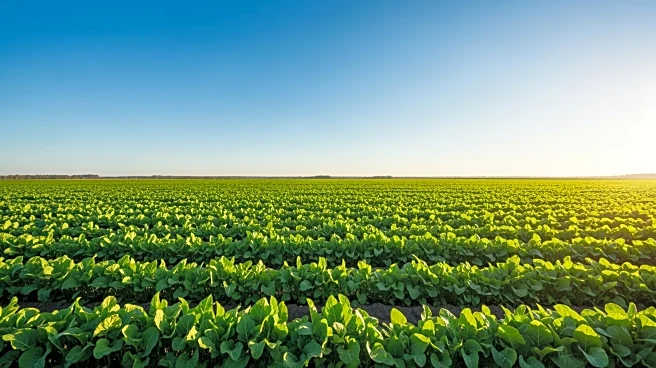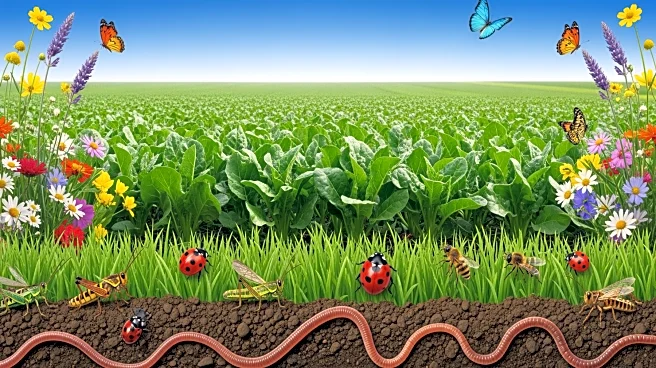What's Happening?
The adoption of cover crops among U.S. farmers has remained stable over the past five years, according to data from the Purdue University-CME Group Ag Economy Barometer surveys. The surveys indicate that
approximately 53% of respondents currently use cover crops, with the adoption rate ranging from 52% to 57% over the years. Despite stable adoption rates, the intensity of cover crop use has increased, with more farmers planting cover crops on a larger percentage of their acreage. The surveys also reveal that motivations for planting cover crops include improving soil health and erosion control. However, some farmers have disadopted cover crops due to concerns about profitability and yield impacts.
Why It's Important?
Cover crops play a crucial role in sustainable agriculture by enhancing soil health, reducing erosion, and improving water quality. The stable adoption rates suggest that while many farmers recognize these benefits, economic factors such as profitability and yield impacts remain significant barriers to broader adoption. The higher adoption rates among survey respondents compared to the national average highlight the potential for increased cover crop use if economic conditions improve or if incentive programs are expanded. Understanding these dynamics is essential for policymakers and agricultural stakeholders aiming to promote sustainable farming practices.
What's Next?
Continued monitoring of cover crop adoption trends will be important to assess the impact of economic conditions and incentive programs on sustainable agriculture practices. Policymakers may consider expanding support for cover crop initiatives to address profitability concerns and encourage broader adoption. Additionally, ongoing research into the agronomic benefits of cover crops could help farmers optimize their use and improve economic outcomes. The agricultural community will likely continue to explore innovative solutions to balance environmental sustainability with economic viability.











